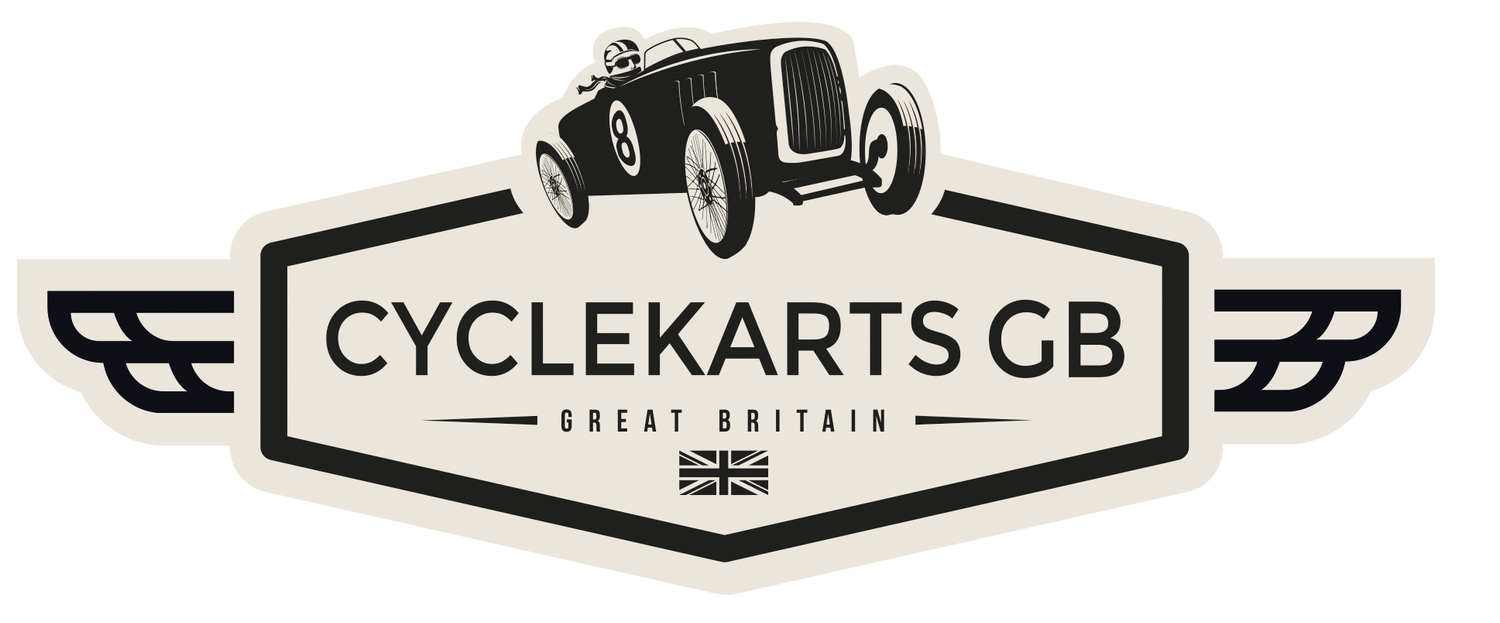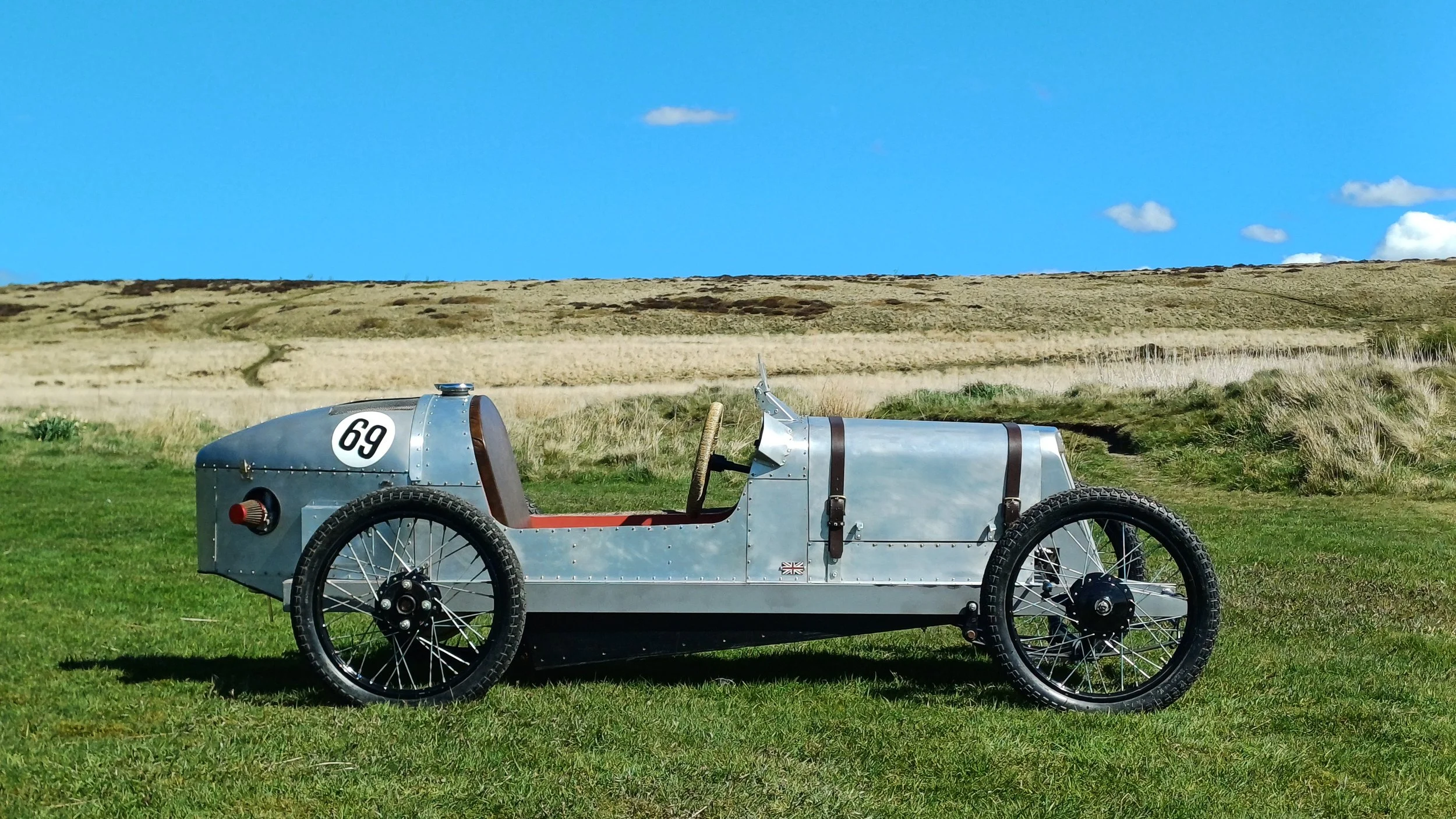
1934 E.R.A No 69.
I’m no engineer, carpenter or mechanic, I followed other people's builds and what they had found worked.
The Inspiration Car
I work in the motor industry and to be honest, vehicle design today leaves me a bit cold. I've always liked old stuff, from a time when we were really pushing the envelope as far as technology and what a human being could do. And so, one evening I found myself watching a couple of (among other exotics) ERA's thrashing around Goodwood at one of the Revival events. I was amazed at how these guys were racing so closely in cars that were nearly 100 years old. They weren't holding back either, it was incredibly exciting to watch, they captured the essence of racing in bygone times...I loved it. So when I started looking at building a Cyclekart, it was a pretty simple choice, it had to be an ERA.
The Chassis
My ERA is a really simple design that follows the Stephenson formula quite closely. It had to be simple otherwise I wouldn't have been able to build it.
The chassis is a basic ladder frame, tapering to the front in 25mm x 75mm x 1.6mm steel tube. The engine is mounted on 30mm x 3mm angle and then braced with 25mm x 75mm steel for strength and rigidity. This is really important to stop the engine torque flexing and making the chain jump.
The Body
Again, the body is standard Stephenson Formula in that it’s a ply tub. 12mm floor and 9mm sides to keep the weight down, this is then skinned in 1.2mm aluminium. The only bit that isn’t ply or aluminium is the top of the tail which is finished in fiberglass. Using a combination of the wooden tub and the aluminium skin gives rigidity and a genuine look. Originally the car was going to be black but when I started prepping the body for paint with ScotchBright, I liked the look of the finish and decided to leave it unpainted.
Running Gear & Engine choice
The front drop axle is from Gemini Karts along with all the steering geometry. The rear axle is a kart axle from eBay. My wheels are eBay finds, £60 for 7 mismatched 17 x 1.20 Honda C90 wheels that I stripped, painted and restored. The 2 front springs I had made by Jones Springs. I would get these from within the club next time, cheaper and more reliable.
The brakes are from a Suzuki 650 Bandit and a Wilwood brake cylinder. This is overkill to be honest but I was erring on the side of caution as it was my first build. The brakes will be modified in the future.
The engine is a stock Honda GX200 (£150 off eBay) with the governor removed, 18lb springs, VM22 Carb with a 125 jet and a TAV converter with a Juggernaut.
How long did it take to build?
I researched the project for ages, far too long really, but when I did eventually get going, it was about 18 months to get a running chassis without a body. The thing that helped the most was going to see other Cyclekarts, particularly Chris Slades ERA, within a month of that visit I had a chassis.
I didn’t try to finish the kart before testing as I didn’t want to dismantle the car to fix it again. I tested it at an event in March 2024, as soon as it would drive, this was essential to the development, and again accelerated the build hugely.
What’s the least and most favourite part of the build?
My favourite part of the build (apart from the whole thing) was the aluminium bodywork. I’ve never worked with any metal before, but it was incredibly rewarding to watch the car come to life when it gained some clothes. The best thing I could advise here is to get yourself a Sharpie and lots of thin card.
My least favourite part was the fiberglassing. It’s difficult, it smells, it's messy, it takes ages and no matter how much you shower, you still itch. Having said that, I don’t know how I would have achieved the shape I did without it, sometimes you have to smile and keep going.
The Little details
I’m really proud of my steering wheel, it looks great but will shred your hands if you don’t wear gloves. The screen is very dinky along with the vents on the tail. The latter are to accommodate the TAV and Juggernaut rather than engine cooling. And my little Union Jacks finish it off nicely.
I’m no engineer, carpenter or mechanic, I followed other people's builds and what they had found worked. There is no innovation here.
How does it drive?
The first test run was at a karting circuit and was a real white-knuckle ride. After a few tweaks of the steering and tire pressures it went really well, it was underpowered but that was just fine for the first run. What really surprised me was how well it handled, just like a kart but not as fast. I always had at the back of my mind to get the centre of gravity as low as possible and I was really pleased I had, it was just the way I imagined it would be..
Ongoing changes and tweaks
Like any other Cyclekart out there, this one will never be totally finished, there will always be things to fiddle with. The first things I would like to change are the brakes, they are too complicated and can be too fierce on the loose stuff. The body also needs louvres but I want to build my own press to do this.
That’s just for starters!.
If you haven’t already joined the forum then please consider doing so and then you can see and read Tim’s Build Journal on the forum in full.






























